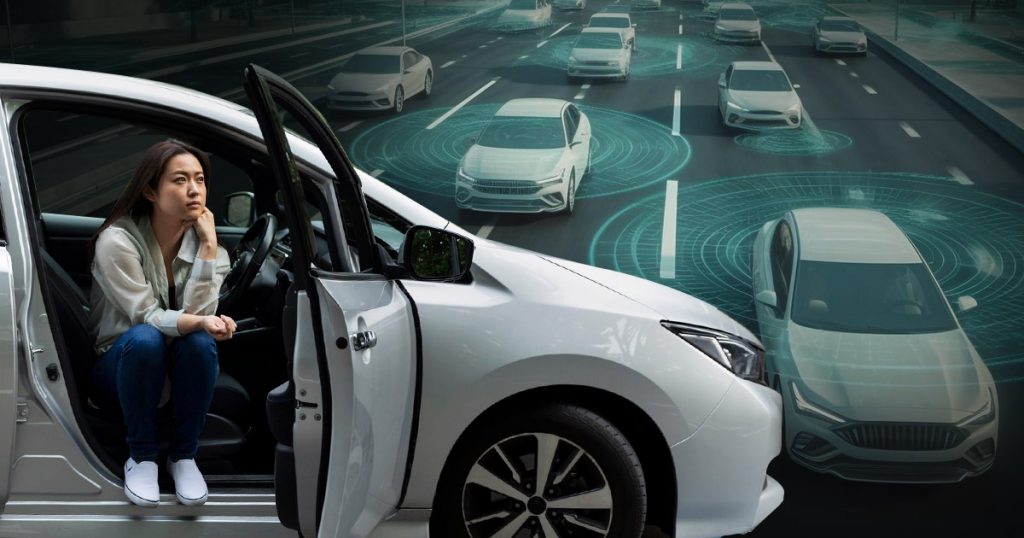Self-driving cars are often considered the future of transportation, promising increased safety, convenience, and efficiency. However, despite these potential benefits, there are significant cons of self-driving cars that raise concerns among experts and the public.
A 2023 report from the Insurance Institute for Highway Safety (IIHS) found that self-driving technology would only prevent about one-third of crashes, as many accidents involve unpredictable elements that autonomous systems struggle to handle.
While self-driving cars are improving, they still present risks that must be addressed. Here are ten major cons of self-driving cars that show why full automation isn’t ready to replace human drivers yet.
1. High Costs of Development and Ownership
The cost of developing self-driving technology is extremely high. Companies spend billions on research, artificial intelligence, sensors, and software. These expenses make autonomous vehicles expensive for consumers.
Even when they become widely available, the cost of maintenance and repairs will be higher than traditional cars due to specialized components like LiDAR sensors and AI-driven systems. This cost factor is one of the key disadvantages of self-driving cars for the average buyer.
2. Potential Job Losses in the Driving Industry
One of the biggest problems with self-driving cars is the potential to replace millions of driving-related jobs. Truck drivers, taxi drivers, delivery personnel, and rideshare drivers could face unemployment as automation takes over transportation.
While new job opportunities may emerge in software development and maintenance, those jobs require specialized skills that many displaced workers may not have.
3. Cybersecurity Risks and Hacking Threats
Driverless cars rely on artificial intelligence, sensors, and internet connectivity. This makes them vulnerable to hacking. A cyberattack could lead to dangerous situations, such as:
- Hackers take control of a vehicle remotely.
- Data breaches expose personal driving history and locations.
- System malfunctions are caused by malware or software manipulation.
Cybersecurity threats are a major negative of self-driving cars, as hacking could turn them into weapons or lead to accidents.
4. Ethical Dilemmas in Decision-Making
In emergencies, autonomous vehicles depend on algorithms to make quick decisions. However, these algorithms may not always align with human ethics. For example:
- If a collision is unavoidable, should the car prioritize the safety of passengers or pedestrians?
- How will AI handle situations with multiple risks?
These moral dilemmas create uncertainty and public distrust, making them significant driverless car cons that need more research and regulation.
5. Unreliable Performance in Complex Conditions
Self-driving technology still struggles in certain conditions, including:
- Bad weather (heavy rain, snow, fog).
- Construction zones with unclear road markings.
- Unpredictable human behavior, like jaywalking or sudden lane changes.
While automation performs well in controlled environments, real-world roads are unpredictable. This limitation is a serious problem with self-driving cars, especially in cities with complex traffic patterns.
6. Legal and Insurance Complications
Current laws and insurance policies are designed for human drivers. With self-driving cars, legal responsibility becomes unclear.
- If an autonomous car causes an accident, who is responsible—the car manufacturer, software developer, or owner?
- Will insurance companies charge higher premiums for self-driving cars due to potential risks?
Without clear regulations, the disadvantages of self-driving cars will create legal challenges for consumers and businesses.
7. Lack of Human Judgment in Emergencies
A major negative of self-driving cars is the lack of human intuition. While AI can process vast amounts of data, it doesn’t have human instincts.
- A driver might anticipate a potential accident by observing body language or slight movements of other vehicles, but AI may not react the same way.
- Self-driving cars rely strictly on programmed responses, which may not always be ideal in unique situations.
This limitation makes it difficult for autonomous vehicles to replace human drivers entirely.
8. Privacy Concerns and Data Collection
Self-driving cars collect massive amounts of data, including:
- Location tracking
- Driving habits and behavior.
- Passenger details and biometric information.
This data could be misused by corporations, advertisers, or even government agencies. Many people are uncomfortable with the idea of being constantly monitored, making privacy a serious problem with self-driving cars.
9. Infrastructure Challenges and Compatibility Issues
For self-driving cars to function efficiently, they require advanced road infrastructure, including:
- Smart traffic signals.
- Road sensors and 5G networks.
- AI-compatible urban planning.
Many countries lack the infrastructure to support autonomous vehicles. Updating roads and traffic systems would require massive investments, making it a long-term challenge and one of the key driverless car cons.
10. Resistance from the Public and Lack of Trust
Despite technological advancements, many people remain skeptical of self-driving cars. Concerns about safety, job losses, and ethical issues contribute to hesitation.
According to surveys, a significant percentage of drivers do not trust autonomous vehicles to handle emergencies effectively. Unless public confidence improves, adoption rates will remain low, which is a major disadvantage of self-driving cars.
Considering all this, self-driving cars offer efficiency, but they still struggle with unpredictability, ethics, and trust. While technology can reduce mistakes, it lacks the human judgment needed for complex situations. The real challenge is not just improving AI but ensuring it works safely alongside human drivers. Instead of full automation, the future may focus on combining human oversight with advanced technology.
